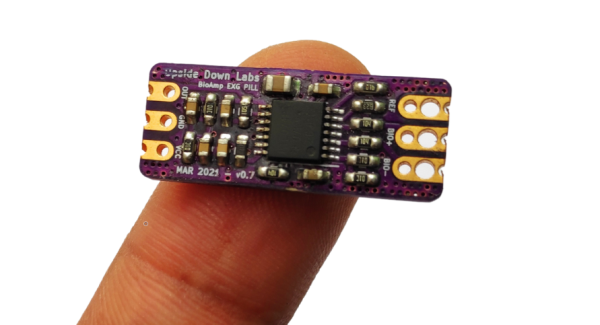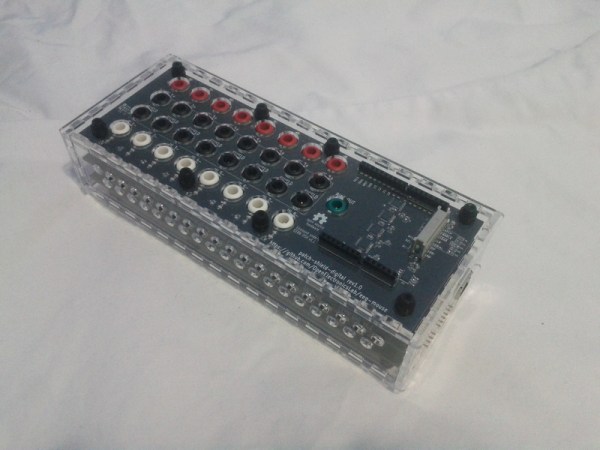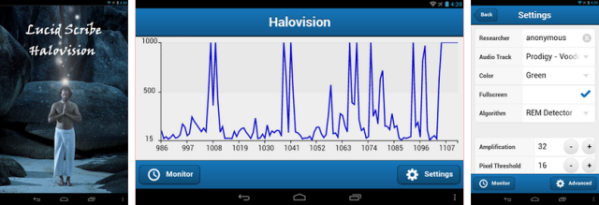The electrical signals emitted by the human body tell us a lot about what’s going on inside. But getting those signals inside your microcontroller is not straightforward: the voltages are too small for most ADCs, and the ever-present 50 or 60 Hz mains frequency makes it hard to discern subtle changes. Over at Upside Down Labs, [Deepak Kathri] developed a universal biosensor interface called the BioAmp EXG Pill to make all this a lot easier.
Its name refers to the fact that it can be used for several different bio-electrical sensing applications: ECG, EMG, EOG and EEG, which deal with signals coming from the heart, muscles, eyes and brain, respectively. To enable such flexibility, the board has connectors for two or three electrodes, as well as solder pads to mount resistors and capacitors to adjust the gain and bandwidth. An instrumentation amplifier increases the strength of the desired signal while rejecting noise and interference.
The form factor allows easy connection to electrodes on one side and a data acquisition system on the other. Measuring just 25.4 mm long and 10 mm wide, it should be easy to integrate into any type of biosensing gizmo you can come up with. [Deepak] has made several demo setups, showing him using the Pill with an Arduino to measure his heart rate, detect eye blinks, and even control a robot arm using his own arm muscles!
The EXG Pill is an evolution of an earlier EMG-only project. We’ve seen several great ECG and EEG projects before, but is the first time we’ve seen one amplifier that can do them all.















